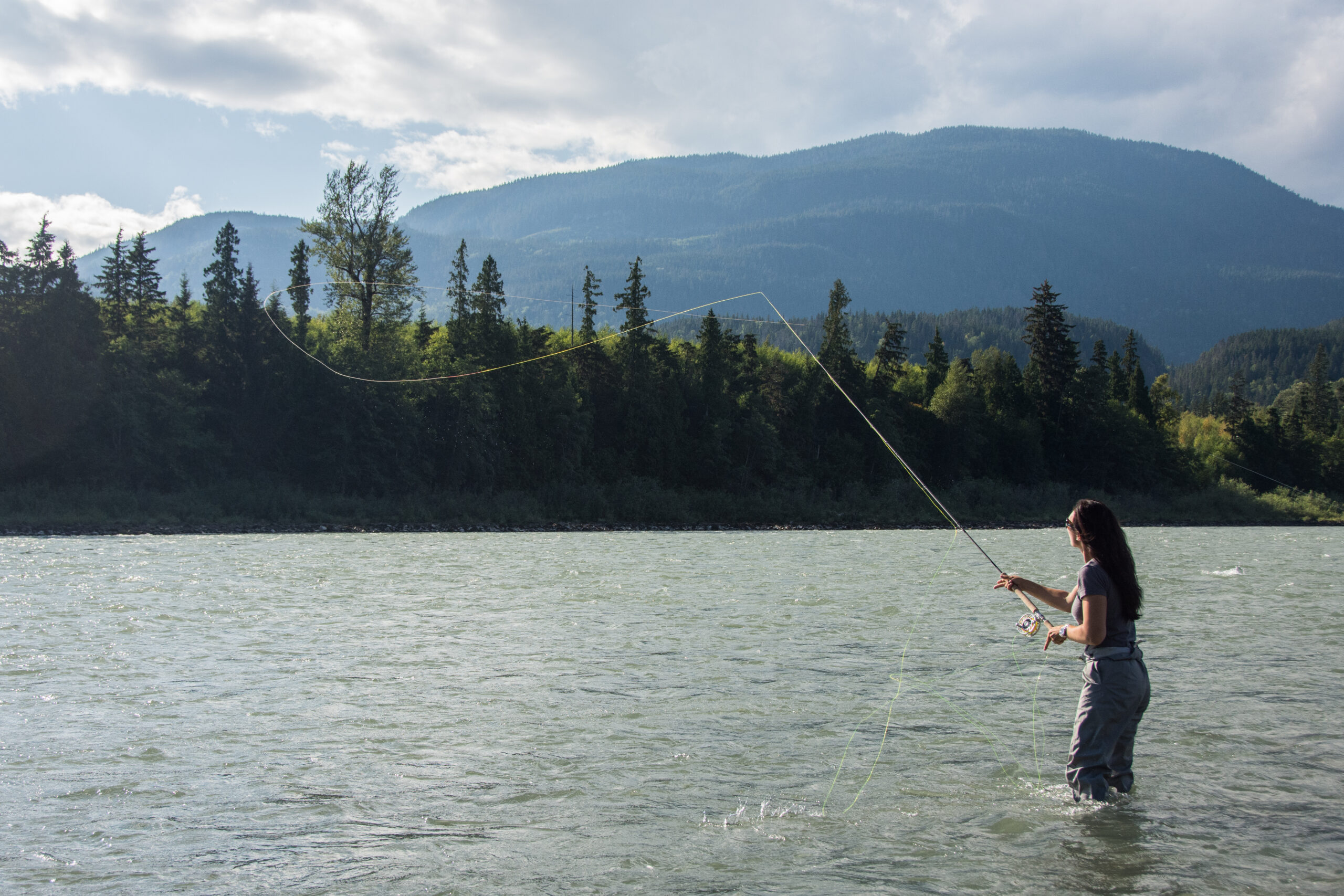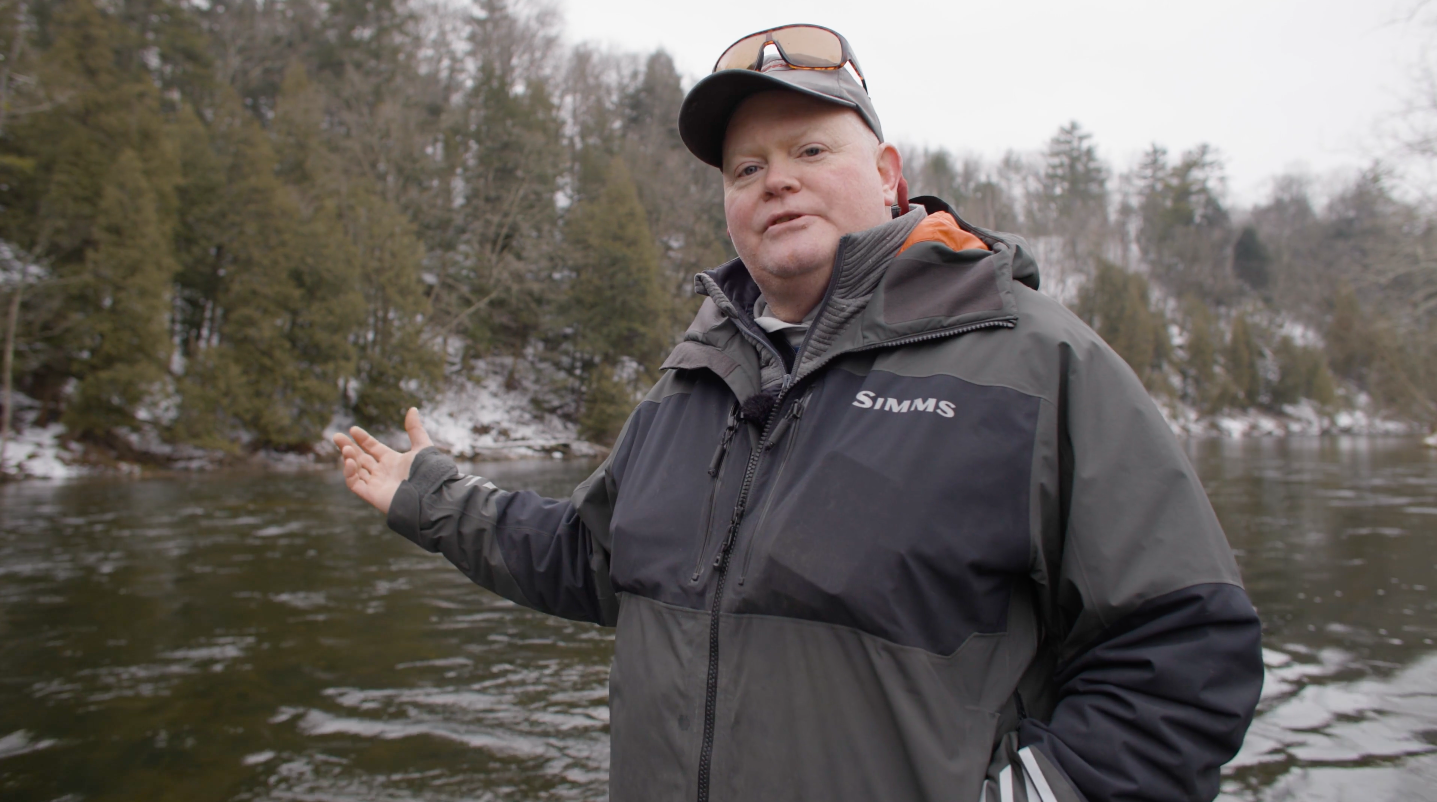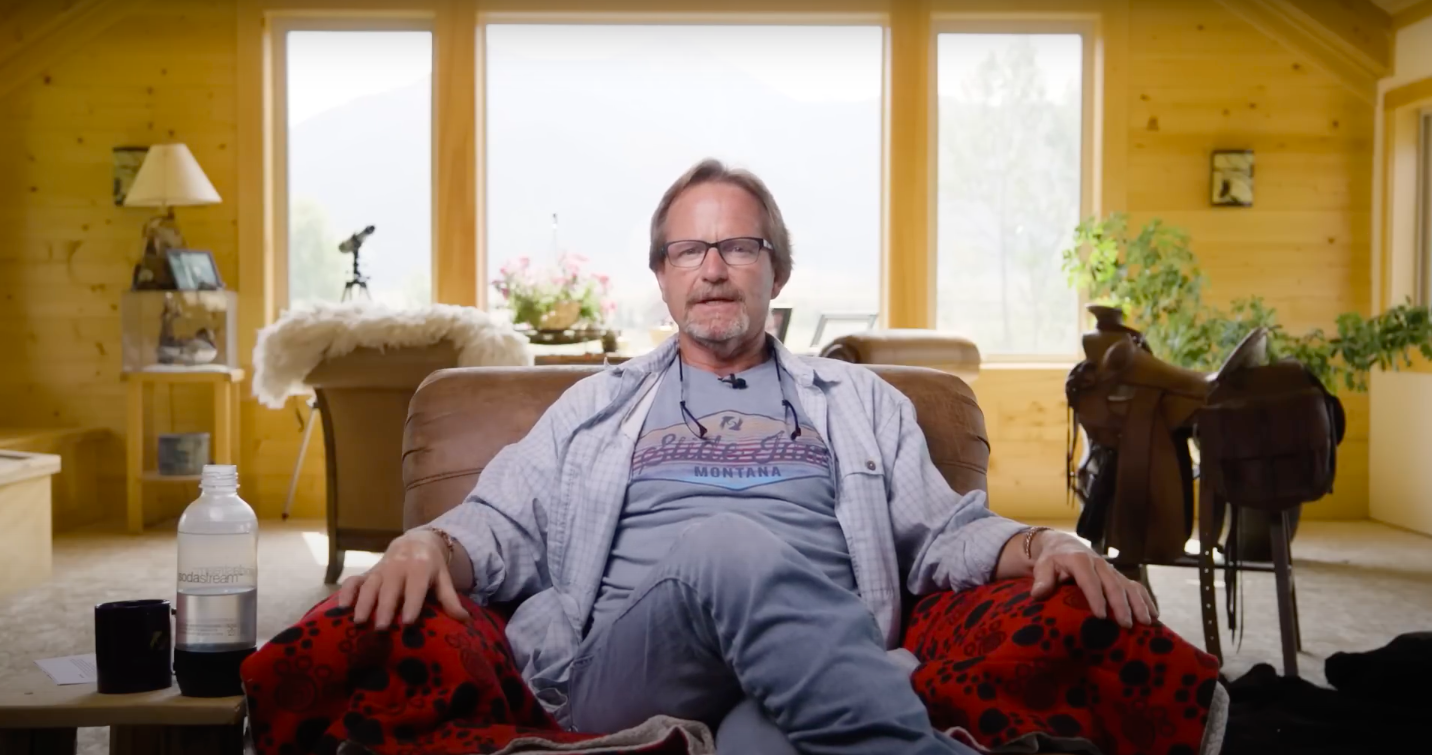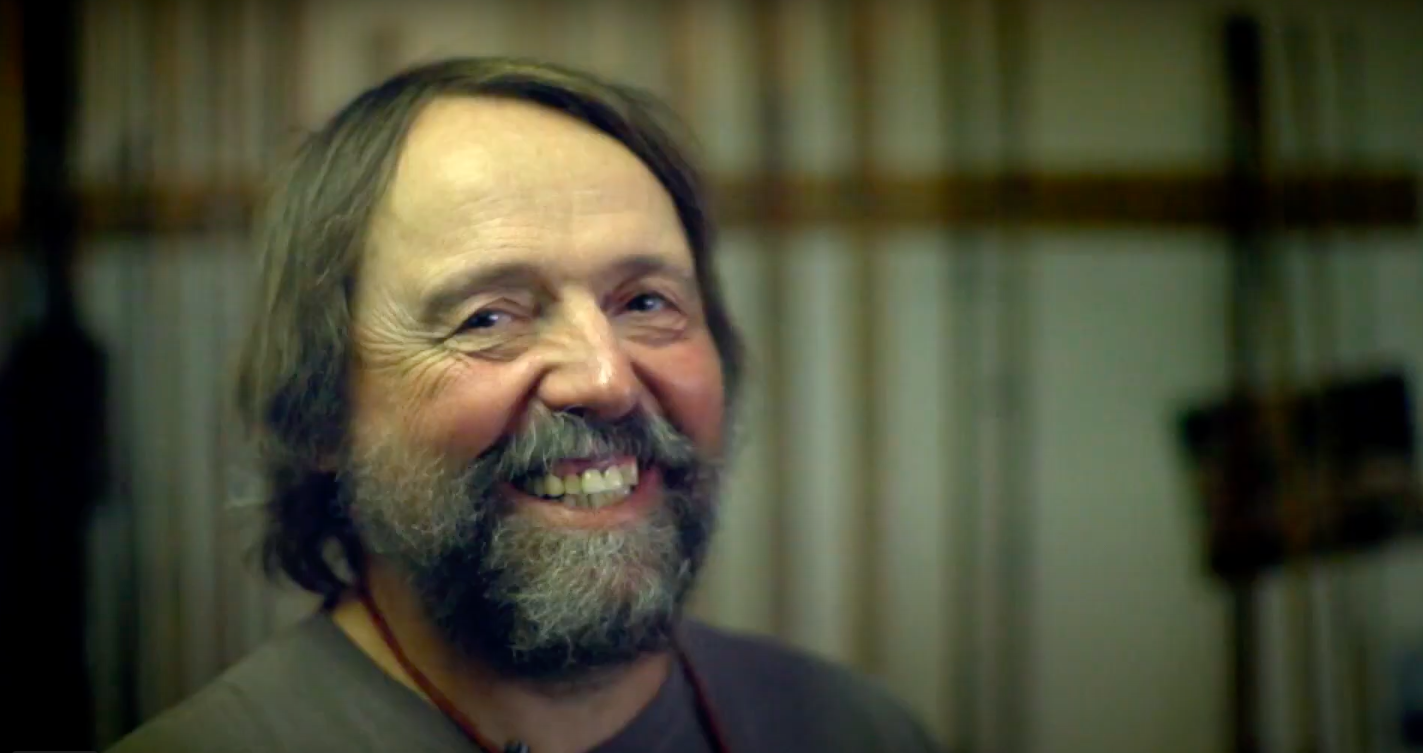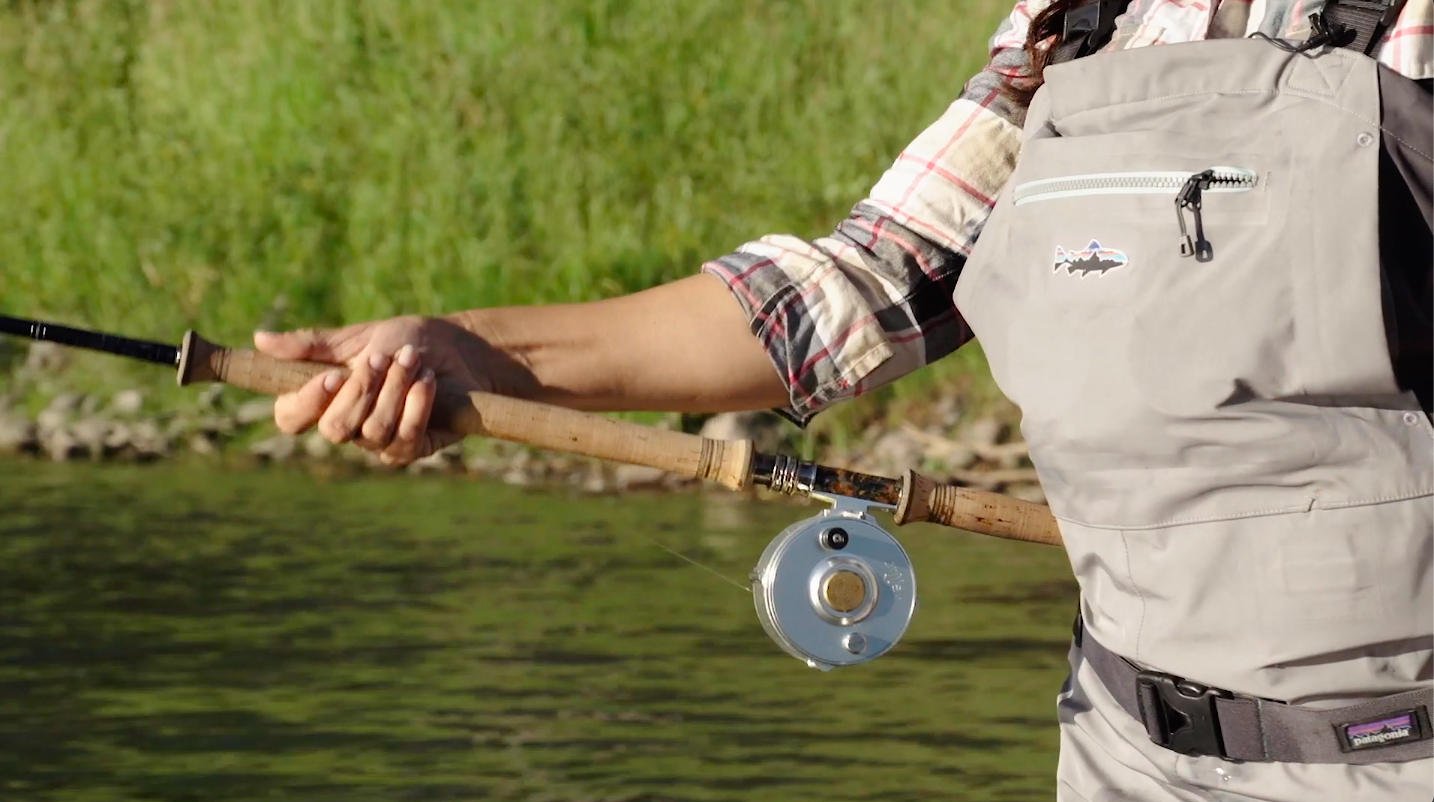Have you ever felt like your fly line had a mind of its own, landing in a pile or twisting through the air like a striking snake? I remember the frustration that ensued when I first started Spey casting. At times it took all my power not to throw my rod in the water and simply walk away from it all for good.
There are a number of casting faults that most new Spey casters tend to make, but today I’m going to focus on the two I see most often: The Bloody L and the Creep. I strongly advise watching the video below (I’ll link it here as well) to get a visual, but I’ll provide some text for context.
Understanding the Bloody L
I’m sure you’ve seen it before. You’re casting your line, and instead of it extending straight as it should, it takes on a sharp bend resembling the letter’ L’ as it leaves the water. This is often the result of a term we call the Bloody L, which is a common Spey casting error where the D-Loop fails to align the anchor parallel to the forward cast.
The name derives from the layout of the line in an “L” shape on the water, and the result is a forward cast that lacks energy to roll over properly. This is typically caused by setting the anchor in an improper position prior to the sweep, or an incomplete or shortened sweep which fails to carry enough energy into the D-Loop.
In an ideal scenario, you’d want a straight line, forming a perfect 180-degree angle in front of you. So, what causes your line to make this L shape? It might be because the starting point of your cast is too far downstream, or you’re moving your rod too slowly, causing your line to drag in the water. Furthermore, if you dip your rod down after lifting it up, you’re asking for trouble.
The Creep: A Stealthy Saboteur
Moving on to the creep – this isn’t your window-peeking weirdo. In simple terms (because, believe me, the conversation around creep can go deep), this is an ill-timed forward motion of your rod tip before committing to the forward cast. This premature move squanders the tension that’s crucial for a sleek cast, often leading to a loss of rod load. Whether it’s a minor inch forward or a more noticeable movement, creeping can alter your cast’s trajectory, throwing a wrench in your rhythm.
So how can you avoid these situations? Here are practical steps to correct these common issues, ensuring more accurate and efficient casts.
Fixing the Bloody L
To iron out the Bloody L, focus on setting your anchor point (where your leader meets the fly line) close to your body. Keep your sweeps crisp and consistent, maintaining tension as you circle up into the correct trajectory. Remember – if your anchor is too far downstream, or you’re dipping or sweeping too slowly, you’re setting yourself up for that dreaded Bloody L.
Avoiding the Creep
Avoiding the creep boils down to maintaining constant tension and the right trajectory from start to finish. Think of your casting motion like throwing a baseball or shooting a bow – it’s all about pulling back, not easing up, to keep that energy and tension right where it needs to be.
Practicing “Perfect” Posture
The other thing to remember is that your posture plays a pivotal role as well. Here, hunching forward or leading with your head can complicate your drift, making it challenging to execute a fully open stroke. So, stand tall, relax those shoulders, and focus on smooth acceleration and alignment – from your feet all the way to your rod tip.
Improve Your Casting With This FREE Mini-Course
That’s a very basic overview, but I’m hoping you’ve already skipped right past this article and gone straight into the video (and my free online mini-course) below! Whether you’re an experienced caster or just starting out, addressing these issues head-on can dramatically improve your spey casting skills. For anyone eager to delve deeper into spey casting, my mini-course has got you covered. From swinging and etiquette to the intricacies of grip, stance, and, of course, troubleshooting the Bloody L and Creep, we cover it all. Check it out here, and let’s get those lines flying true and the fish biting. See you soon!

